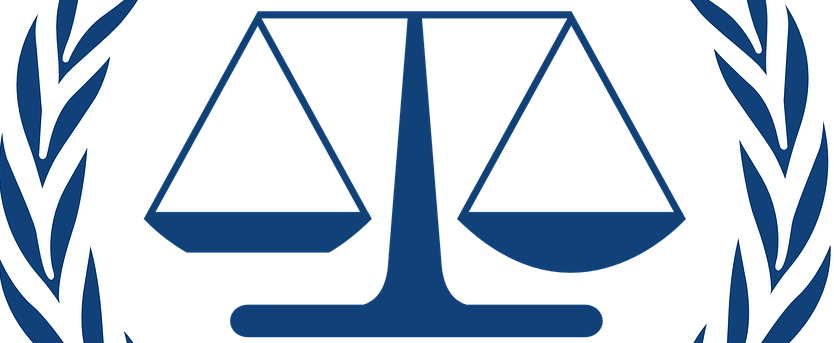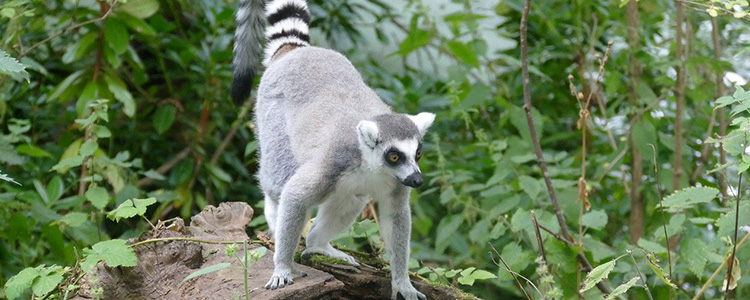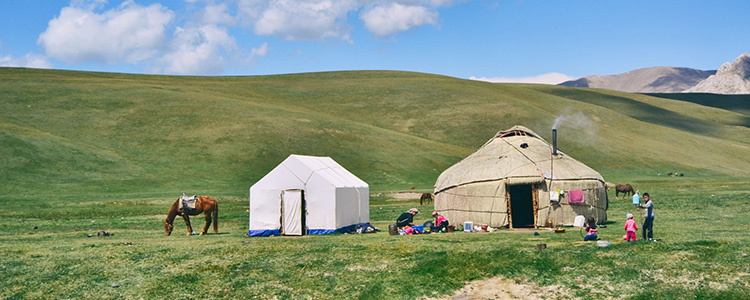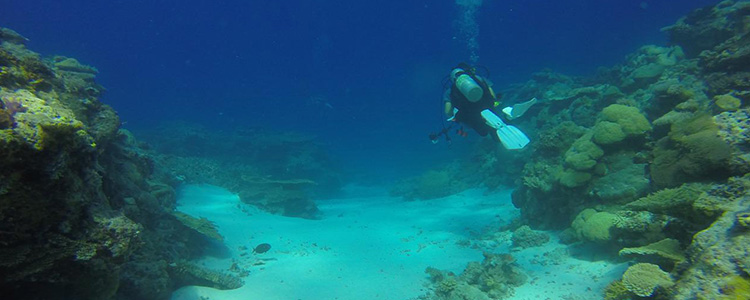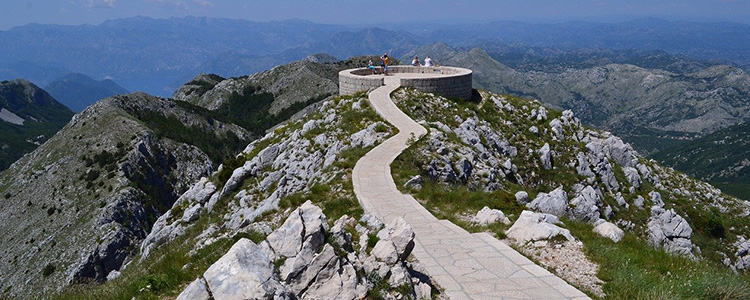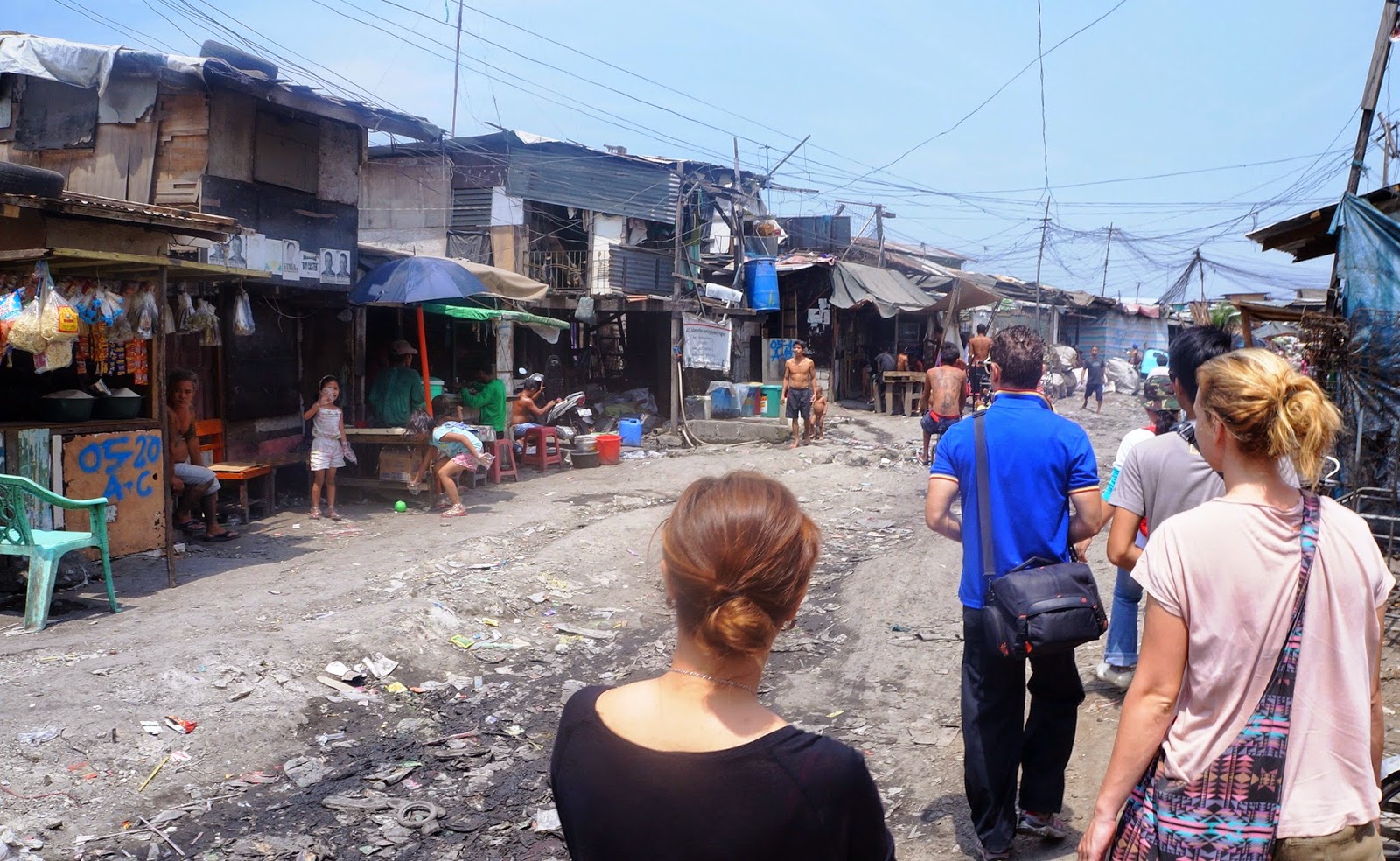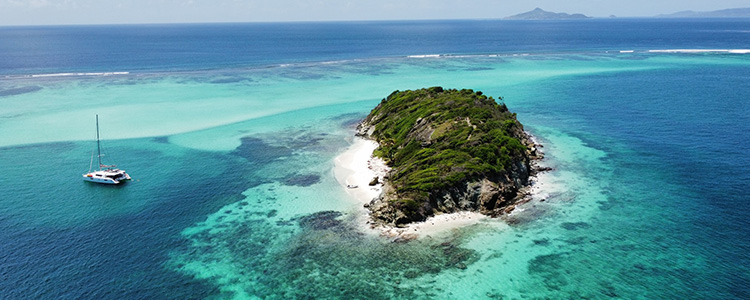Mongolia Country Bundle: suggestions, stories and tips
Content about Mongolia on WorldSupporter
 Mongolia: Updates & Travel
Mongolia: Updates & Travel
Travel in Mongolia
- Mongolia is the fascinating land of pristine steppes, craggy mountains, blue skies and a mix of Eastern Buddhist mysticism and the pure life of the nomadic people. Discover the Erdene Zuu Tibetan-style monastery, the imposing Khogno Khan mountains with panoramic views, the immense Els Sand dunes and the beauty of the Gobi Desert. A common way to discover the country is as part of the Transmongolia Express!
Updates Mongolia
- More about Mongolia, updates and contributions, see the link below.
 How does healthcare work in Mongolia, and what travel insurance, health insurance or expat insurance do you need?
How does healthcare work in Mongolia, and what travel insurance, health insurance or expat insurance do you need?
- How does the healthcare system work in Mongolia?
- What is the quality of healthcare in Mongolia?
- How does the public healthcare system work in Mongolia?
- How does the private healthcare system work in Mongolia?
- How is the general practitioner arranged in Mongolia?
- How is the dentist arranged in Mongolia?
- How is pregnancy care arranged in Mongolia?
- How safe or unsafe is a trip or stay in Mongolia?
- What work and travel insurance policies are suitable for short and long stays in Mongolia?
- What emigration and expat insurance can you take out for Mongolia if you are going to live there for a while?
How does the healthcare system work in Mongolia?
What is the quality of healthcare in Mongolia?
- The healthcare system in Mongolia has made great strides in recent years. The old Soviet model has disappeared and a centralized system has taken it's place. However, there are still many challenges in the healthcare system, especially in remote areas.
- Since the 1990s, the country has had a growing private sector in addition to the public sector. This is mainly due to rising incomes and the increase in medical tourism. The government is therefore investing a lot in the quality and infrastructure of healthcare.
- The national emergency number for an ambulance is 103, but don't expect it to work, when you are somewhere in the steppes...
- Pharmacies are mainly found in the city. In the countryside this is a different story. It also often happens that certain medicines are out of stock and that staff do not speak English. As a non-Mongolian speaker, who uses medicines, it is therefore wise to check in advance whether you can bring your own medicines.
How does the public healthcare system work in Mongolia?
- In the 1990s, the government set up a healthcare fund that is financed from various sources; employees, employers and government subsidies.
- Health insurance is mandatory and covers the majority of the population. The contribution is income-dependent and is paid by both employee and employer. There are government subsidies for vulnerable groups. However, health insurance does not cover all care and direct contributions are often required.
- The aim of the public health care system is to make it accessible to everyone, including people in rural areas. Unfortunately, the latter is particularly difficult, which is reflected in the shortages of staff and facilities. There are also differences between the quality of care in the city and in the countryside.
- Public health insurance is also mandatory for expats who are legal residents of Mongolia. Your employer usually arranges this for you, but if you are not an employee (but an owner or pensioner, for example), you must arrange it yourself.
How does the private healthcare system work in Mongolia?
- Private care has been on the rise since the 1990s. Mongolians are becoming increasingly wealthy, especially in the city, which means there is more demand for and money for the conveniences of private care. Unfortunately, this also means fairly high costs, making private healthcare virtually inaccessible to the less affluent population.
- Private healthcare is mainly concentrated in Ulaanbaatar.
- In the private healthcare sector, you will generally find better/specialized doctors, modern facilities and shorter waiting times. Several institutions, including the Intermed Hospital, SOS Medica Mongolia and the Grandmed Hospital, offer care that meets international standards.
- It is possible to take out local private health insurance that is specifically aimed at local healthcare. However, many expats and emigrants opt for international health insurance because this can also provide coverage in neighboring countries and for matters such as medical repatriation.
How is the general practitioner arranged in Mongolia?
- As in other countries in Asia, there is no real GP system. People usually go straight to a specialist. The closest thing to a GP is a doctor at a private medical clinic. Here you can generally receive personal care and return to the same doctor several times. A good (reviewed) clinic with a general practitioner or family doctor is SOS Medica Mongolia in Ulaanbaatar.
How is the dentist arranged in Mongolia?
- Dental care is available in both the public and private sectors. Dental care is generally of excellent quality.
- Public health insurance covers (part of) basic dental care and emergency dental care. Think of things like check-ups, filling cavities and fluoride bites.
- The private sector generally offers more modern care and options. The range of treatments is also usually larger. It is also more expensive, but offers advantages such as faster treatments and dentists who use the most modern techniques. An international health insurance with dental coverage is certainly not a bad choice in Mongolia.
How is pregnancy care arranged in Mongolia?
- If you live in a big city, there is certainly good pregnancy care available. Both public and private care is available, but it will be more difficult to find an English-speaking doctor in public care. The best place to start looking for a doctor during pregnancy is in (social media) groups and fora with other expats. Meet with the doctor in advance to see if they have the same ideas as you and if there is not a big language barrier.
- The quality of maternity care is higher in private than in public healthcare facilities. You can expect good prenatal care, with the necessary tests and examinations. However, the costs are also a lot higher than in public institutions.
- In general, doctors prefer a natural birth, which means that a caesarean section is mainly performed, when it is really medically necessary.
- Abortion on request is legal in the first trimester of pregnancy.
How safe or unsafe is a trip or stay in Mongolia?
What should you pay attention to in terms of safety in Mongolia?
- When people think of safety in Mongolia, they may not immediately think of crime, but rather of the endless steppes and a capital that is usually colder than the average freezer...
- In general, the country is a safe country in terms of crime. The people are friendly and hospitable, there are very few violent crimes against foreigners and there is little political unrest. But it is still wise to be a bit streetwise, especially in Ulaanbaatar, where fraud and theft certainly occur in busy areas. You may also encounter the vodka-induced night-time brawl. So it is a good idea to stay away from the small streets and dark alleys in Ulaanbaatar at night.
- Another safety issue is the total emptiness of the country. If you get stuck in the Gobi desert with car- or horsetrouble, it can take days before someone finds you.
- Also be prepared for the very harsh winters. Temperatures down to -40°C are not uncommon, and neither is hypothermia.
What should you look out for in terms of diseases in Mongolia?
- In the winter, Ulaanbaatar often has to deal with heavy air pollution, which can have consequences for people with respiratory problems.
- Due to the cold temperatures, you do not have to worry about tropical diseases.
- Rabies is a problem in the country. So be careful with stray dogs, and react immediately if you are bitten, licked or scratched.
- Tap water is not drinkable. Always use bottled water.
- Dairy products are fresh, and your stomach may need some time getting used to it.
What should you pay attention to when it comes to traffic in Mongolia?
- Ulaanbaatar is pure anarchy on four wheels. Don't expect any traffic rules, hours of traffic jams and pedestrians crossing on a whim.
- In the countryside it's a different story. There are few (to no) roads and if you have a breakdown on the road, you can only hope that you meet a handy nomad.
- 4x4s are a must and GPS is more than essential.
- Buses are a good option if you don't plan on driving yourself. They are generally a bit crowded and chaotic.
- Be careful with special (foreigner) prices in taxis. Try to negotiate and agree on an amount in advance.
What work and travel insurance policies are suitable for short and long stays in Mongolia?
Is the trip to Mongolia and your return sufficiently covered? Are you sufficiently covered before, during and after your activities? Which insurance best suits your trip and your activity? Read more about insurances for abroad on JoHoinsurances.org.
What emigration and expat insurance can you take out for Mongolia if you are going to live there for a while?
- If you work and live legally in Mongolia, it is mandatory to have national insurance. However, many foreigners who live in Mongolia also opt for international health insurance. This offers the certainty that the higher costs of private (and therefore faster, better) care are covered and that things like care in neighbouring countries, medical evacuation and repatriation are also covered. Read more about insurances for abroad on Expatinsurances.org.
 Packing list for Mongolia, travel insurance for Mongolia, and taking your belongings
Packing list for Mongolia, travel insurance for Mongolia, and taking your belongings
To pack and bring to Mongolia
- What to take with you to Mongolia: spotlighted
- What should you keep in mind when traveling to Mongolia with your belongings?
- Are there mosquitoes in Mongolia?
- Are there sand flies in Mongolia?
- Can you buy DEET, or other mosquito repellents, in Mongolia?
- Can you buy a beer or wine in Mongolia, or take it to Mongolia?
- Can you buy a joint or weed in Mongolia, or take it with you to Mongolia?
Packing list for Mongolia, travel insurance for Mongolia, and taking your belongings
To take or not to take to Mongolia, leave at home or arrange locally?
Sufficiently insured or not for your activities in Mongolia?
Sufficiently insured or not for your trip to Mongolia?
What to take with you to Mongolia: spotlighted
To bring with you and to check:
- Documents: passport that will last at least 6 months and copies.
- Money: enough Mongolian Tugrik (MNT), because withdrawing cash is difficult outside the big cities.
- Care: sunscreen and lip balm with SPF - the sun can be intense, especially at high altitudes. Aftersun.
- Outdoor and practical: hat/cap and good sunglasses. A buff, scarf or bandana.
- Clothing: the country is known for its extreme temperature fluctuations. It can be scorching hot during the day, freezing cold at night. Layers, layers, layers! Thermal underwear, t-shirts, fleece sweater and a warm jacket. In winter, also bring gloves, scarf, warm socks and hat.
- Protection: a backpack rain cover and a waterproof and windproof jacket are also essential.
- Shoes: sturdy hiking boots for trekking and rough terrain, sandals or slippers for at home or when it is very warm.
- Medicines and travel kit: a small first aid kit with plasters, painkillers, stomach upset remedies, ORS (dehydration is a thing) and mosquito repellent in the spring and summer months. Wet wipes and hand disinfectant.
- Technology and equipment: world plug with type C & E and a power bank.
- Extras: tissues or toilet paper.
To consider:
- Reusable water bottle with filter.
- Quick-drying travel towel.
- E-reader or other offline entertainment – because Wi-Fi (or alcohol) is not always and everywhere available.
- A sleeping bag and possibly a sheet bag if you have big plans, or want more comfort in your basic accommodation (more about taking a sleeping bag or sheet bag).
- Headlamp or flashlight.
- International driving license, if you want to rent a car.
What should you keep in mind when traveling to Mongolia with your belongings?
- The season. In any case, the temperature differences are big, but when you go to Mongolia in the winter? Then you will have to be a little more prepared.
- That people dress fairly conservatively.
Are there mosquitoes in Mongolia?
- Mosquitoes are present in the spring and summer, when Mongolia warms up.
- Apart from being annoying, you don't really have to worry - the Mongolian mosquitoes generally don't transmit diseases.
Are there sand flies in Mongolia?
- Little is known about sand flies in Mongolia, and that is usually good news. Sand flies don't seem to pose a big threat like in tropical areas. In the more southern or dry areas (such as the Gobi Desert) you can encounter small stinging insects in the evening that can be annoying.
- Just use the same anti-mosquito equipment: DEET, socks, long trousers, light clothing.
Can you buy DEET, or other mosquito repellents, in Mongolia?
- Mosquito repellent can be found in the large pharmacies and supermarkets in Ulaanbaatar.
- The chance that you will find your favorite product somewhere is very small.
Can you buy a beer or wine in Mongolia, or take it to Mongolia?
- In general, you are allowed to drink alcohol in Mongolia, but there are exceptions.
- For example, the first and twentieth of the month are alcohol-free in Ulaanbaatar, to motivate people to work hard and pay their bills. You cannot buy alcohol on that day. Not in shops or in bars.
- Other districts sometimes have even stricter rules - such as one day a week without alcohol.
Can you buy a joint or weed in Mongolia, or take it with you to Mongolia?
- Leave your Bob Marley hoodie at home, because Mongolia is not a country to experiment with cannabis or other drugs. Despite the fact that cannabis grows wild and has played a role in local culture for hundreds of years, it is still completely illegal.
- Medicinal weed? Also not allowed.
- There are severe penalties for using and possessing cannabis plants. You should definitely not try to take it with you to Mongolia, because then you can end up in jail for life.
 What are typical Asian habits, food customs and Asian philosophies?
What are typical Asian habits, food customs and Asian philosophies?
Why this blog about habits and philosophies in Asia
I love Asia. I feel at home in Asia. I am half chinese and half dutch. I feel more at ease in filipino culture than chinese culture. I have a good friend from Japan. Throughout the years, I have tried to be open to everything Asia has to offer. To embrace Asia in my being, in my core and to understand and learn more of this continent in the world. Some of the things that really caught me... Any Asian habits that particulary interest you?
What are the habits in China?
- Don't scoop food in your bowl for yourself, but wait for your host or hostess to do so.
- It is impolite to eat everything in your bowl; leave a small amount as a sign of respect.
- Slurping while eating is not rude in China, but rather a sign that you like the food. Let's slurp.
- Never refuse an offer to have some food or drinks.
- Red is the color of happiness, do not wear it at funerals.
- When you have tea, make sure the teapot points at the other tables, not at a person on your table, that doesn't bring luck.
- Squat toilets, yes they are still widely used all over China.
- Public spitting is still a habit for some people.
- Drinking hot water is normal and considered healthy.
- Early rising is a habit for many chinese people and to practice tai chi.
What are the habits in Indonesia?
- Gotong royong is the spirit of communal cooperation and mutual assistance. It's a deeply ingrained value in Indonesian society and is often seen in neighborhood clean-up efforts or helping neighbors in need.
- When having a meal together it is customary to wait for the host to start eating before you dig in. It is also considered impolite to refuse food that is offered to you. If you are full, you can take a small portion and say thank you.
- Eating together is a time for families and friends to connect and socialize. Rice is a staple food in Indonesia and is usually eaten with every meal without rice it is not considered a meal. It's not uncommon for Indonesians to eat with their hands.
- Life Cycle Ceremonies happen around various stages of life. Tedak Siten, a Javanese ceremony, celebrates a baby's first steps. Metatah, a Balinese ritual, involves the filing of a child's teeth to mark their passage into adulthood.
- Batik - is an Indonesian fabric with cultural significance. Different patterns have different meanings and are worn for different occasions.
What are the habits in Japan?
- Cultural customs: Instead of shaking hands, people in Japan bow. The deeper, the more respectful. Respect for elders and superiors is deeply rooted in Japanese culture. Kawaii means “cute” and is an important part of Japanese culture, especially among young people.
- Social norms & mutual communication: Everything is about respect and harmony. Order, punctuality and cleanliness are key words. There are a number of expressions for this. Kurashi - means “way of life” or “the ideal way to spend our time,” but like many words that get lost in translation, it means more than that. If you have not yet tidied up according to the KonMari Method, focusing on your kurashi will motivate you to start. Kirei - is an activity. You look at all your possessions and decide what you want to keep and what can go. It is an emotional literal clearing and cleaning activity. By cleaning up, you reflect on your past and future.
- Etiquettes & traditions: Onsen are public Japanese baths, there are many rules how to bathe. Like about chanoyu, the Japanese tea ceremony, is full of traditions and etiquettes. It is an art form, a very formal event where every movement and action has a meaning. It is about creating a moment of calm and harmony.
- Eating and drinking habits: Eating with chopsticks is the standard way of eating. There are several etiquette rules associated with using chopsticks. The most important are that you never place your chopsticks upright in the rice (similar to incense sticks at a funeral), or pass things from chopstick to chopstick. This happens at funerals and not in everyday life. In addition, eating on the street or public transportation is not-done among locals. Ramen you may slurp, but don't burp! Fish is often eaten first, and then the rice. If you go to an “izakaya” with friends or colleagues, you often share dishes. Here it is customary to use the back of your chopsticks to place the food from the plates on your own plate, or you use clean chopsticks.
- Bonsai - Japanese people recreate nature in miniature, this specific horticulture is called bonsai.
- Hogejagu - The Japanse art of letting go.
- Ikigai - What is worth living? What is it worth coming out of bed for? What drives you? What inspires you?
- Kintsugi (golden joinery) - is the Japanese art of repairing broken pottery with lacquer dusted or mixed with powdered gold, silver, or platinum, As a philosophy, it treats breakage and repair as part of the history of an object, rather than something to disguise. You can buy Kintsugi kits in the Netherlands, it is in my opinion a very nice way to glue broken things, with golden glue.
- Kirei - is an activity. You look at all your possessions and decide what you want to keep and what can go away. It is an emotional literal clean-up and clean-up action. By cleaning up, you reflect on your past and future.
- Kurashi - translates to “way of life” or “the ideal way of spending our time,” but like many words lost in translation, it means more than that. If you haven’t tidied using the KonMari Method, focusing on your kurashi will motivate you to start.
- Mottainai - (もったいない or 勿体無い) It is a term of Japanese origin that has been used by environmentalists. The term in Japanese conveys a sense of regret over waste; the exclamation "Mottainai!" can translate as "What a waste!" Mottainai is the feeling of sadness you have when something hasn't reached its full potential. Recycle and repair. It's all about the love you have for your old stuff.
- O-hanami - In april are the cherry blossom viewing parties.
- Omikuji - These are slips of paper that tell your fortune, divided into kichi (good luck) and kyo (bad luck). Depending on the shrine there are various grades of good and bad luck in between. One theory says if you read it without showing anyone else and then tie it to the branch of a tree in the shrine grounds before going home, even bad luck is converted into good luck.
- Omoiyari - Omoi is thinking, memories and emotion. Yaru is doing. It is empathy, freely translated, it is on the other hand more ordinary and special. It's just because it's part of everyday life in Japan, not just an empathetic reaction. It is special because it makes compassion a part of the community. How do you master omoi? Start with yourself, focus inwards. If you recognize and understand your own feelings, you can translate that into compassion for others. The essence of omoiyari is that you are aware, of other people in life. You behave in a way that is pleasant for others.
- Shintoism - Shinto is the early religion of Japan. It is a combination of two chinese characters, which means: "The way of the gods." In Shintoism the Kami are being worshipped. Kami are gods of nature. Some kami are bound to be found in certain places, others are united with bigger objects and phenomena. Amaterasu is for example the god of the sun. Marie Kondo the "spark-joy guru of tidying" and her method, the KonMari method, is based on Shintoism. Keeping the house tidy is part of the practice.
- Shinrin-yoku - I have sent my japanese friend once a photo of me snow bathing (in a bathing suit swimming in the snow) and asked her the japanese term for snow bathing. There is no japanese term for it. And I thought there was! The Japanese have a term for forest bathing: Shinrin-yoku. To be in the forest with the trees, will make sure you will be re-energized and that you can feel your own core.
- Sumo, Judo and Karate
- Tea ceremony - The aim of the tea ceremony (in a small space) is to reduce daily life to the barest essentials and idealize form. Behind this idea is to intensify the brief time spent together as a moment to be cherished. Tea utensils, the preparation of tea and the tea ceremony etiquette is all very important. When you will experience a true tea ceremony it is advised to prepare yourself to understand more beforehand of this Japanese ceremony.
- Tenei- It is about patience and respect of the daily things. Try to find harmony in the day to day activities, to be correct and punctual towards others and to be persistent of the things which are important to you, even when it is not easy.
- Tokimeki - As explained by the latest Marie Kondo on Netflix or in her book, do what you like and what you think is important in your life…
- Tsukumogami - According to Shinto animism, some inanimate objects could gain a soul after 100 years of service, a concept know as tsukumogami.
- Omiyage and Temiyage - Omiyage and Temiyage are Japanese names for two kinds of gifts. Omiyage are souvenirs you bring home from a trip. Temiyage are thank-you gifts you bring when you visit someone. Japanese people have the habit of buying plenty of gifts for their friends. As a foreigner it is appreciated when you bring Omiyage and Temiyage.
- Wabisabi 侘 寂 - A lot of things around me are Wabisabi, especially when you try to use things as long as possible. And when you are open to see things in the light they are, and not everything has to be perfect around you. Life in it's imperfection.
- Zakka - is to be grateful for the normal, simple things that make life special. For example your favorite sweater of coffee cup.
What are the habits in Laos?
- Cultural habits: Lao people generally prioritize balance and well-being over material possessions. Lao people are known for their patience and laid-back attitude. Stress in uncommon. This is reflected in their daily lives and business interactions.
- Boh penyang means "never mind". It is a way of life and considers the slow pace the best.
- Social habits & communication: Wai - This is a traditional greeting where people press their palms together in front of their chest and slightly bow their head. The higher the hands, the more respect shown.
- Sabai-dee- A common greeting that translates to "Are you well?" This reflects the Laotian emphasis on well-being and politeness.
- Showing anger or disappointment in public is inappropriate. It causes everyone to lose face, better to keep smiling and keep your voice low, speak softly.
- Pointing and gesturing with hands is frowned upon.
- Lao people are not big on waiting in line. They often push and shove to get to the head of the line.
- Etiquettes & traditions: Spirit worship - Alongside Buddhism, many Lao people also believe in spirits and engage in traditional rituals to honor them.
- Women should avoid touching a monk, the robes and not sit besides a monk. Almsgiving can be done directly in the bowl, not handed directly to the monk.
- Never point your feet or soles towards people, a buddha, a temple or statues. That is considered disrespecfull.
- Eating & drinking habits: Lao people eat with spoon and fork, not with chopsticks. It is common to sit on the floor while eating.
What are the habits in Mongolia?
- There are certain habits in the ger, the yurt.
- Sleep - Always sleep with your feet facing the door, never toward the altar.
- Whistling - Whistling in a ger is considered rude.
- Be aware that fire is sacred to Mongolians. Do not throw garbage into the fire.
- Elders - Always let elders lead the way and do not sit with your back or feet to the altar.
- Hospitality - When you are offered food or drink, accept it, even if it is just a little. Use your right hand, with your left hand for support. It is customary to give small gifts to your hosts, such as fruit, candy or alcohol.
- Holding a cup - Hold a cup underneath, not by the rim.
- Say no in an indirect way, that is polite.
- Tsagaan Sar - From late January to mid-February, Mongolians celebrate the New Year. It is the most joyous occasion for the country's nomadic herders because Tsagaan Sar marks the arrival of spring after the long and harsh winter in which hundreds of their animals can freeze to death. Tsagaan Sar has been celebrated for more than 2,000 years. The festival is essentially intertwined with numerous deeply symbolic rituals. The festival is celebrated throughout the country and is still a holiday that Mongolians most look forward to with renewed hope for happiness and prosperity. Around the New Year, families burn candles at the altar, symbolizing Buddhist enlightenment. Mongolians also visit their friends and relatives (at the home of the eldest in the family) on this day and exchange gifts. Many people dress in full Mongolian national costumes.
What are the habits in the Philippines?
- Use of 'face' in communication - Briefly raise eyebrows to confirm or to mean yes to a question and also used as a brief greeting (all silent).
- Indicating direction by pursing lips and turning head in direction, all silent as well.
- Baon - refers to the monetary allowance or food normally provided by the parent to a child who goes to school.
- Bayanihan - When a house is broken, the whole community helps fixing the house. You might have seen the pictures of a group of people carrying a hut, when it needs to be transferred. It is a true community spirit. You talk, you help and protect the people around you. It is team effort, only possible when done with a group. It is truly a beautiful thing.
- Cockfighting is a popular national sport in big and small arenas all over the country. Goal is to gamble (win money) and eat the roosters who lost the game.
- Finding your spot - Recently I was back in the Philippines, taking public transportation. When you would like to take your window seat, be reminded you have to climb over other peoples lap. Squeeze in between the seat in front of you and the seat with the passenger on it. Enough space, a little intimate but do-able, it has something about it.
- Pacquiao - Filipinos adore boxer (and politician) Manny 'Pagman' Pacquiao.
- Pagmamano - Children take your hand, put it on their forehead, as a way of greeting you. It is an act of respect. The child says mamo po, can I have your hand please? Most of the time, they say God bless (you), when put on their forehead.
- Pasalubong -In the Philippines it is common when you have been on a trip, that you bring a token of love back to the people who stayed home. It is a filipino tradition of travellers bringing gifts from their destination to people back home. It can be anything, something to eat or to drink is always a welcoming gift, since filipinos love eating! It is actually not about what you bring, it is something that you have brought, so the other person knows you thought about them while away. The first time, I heard bring pasalubong, from multiple people, and didnt know how to act. When you see souvenir stores in the Philippines, it has the sign pasalubong. So now you are prepared.... just bring something back...
- Noise and music - Filipinos are crazy about high volumes and karaoke (called videoke) and music from the 70s like The Carpenters. There was one big world hit: Anak by Freddie Aguilar in 1978.
- Remedio - Is fixing things, even though you dont know how to fix it. The filipinos use remedio. Remedio used to drive me crazy. It is fixing things with what you have, in a creative way, and if it works again... that will be clear in the near future. You have to be flexible to embrace remedio.
- Squeeze - Squeeze your but, in the jeepney, also when you think it is already full. There will be place, when you squeeze. When you are for example sitting at the window in an airplane and you have two filipinos beside you, you squeeze your body in and out going to the aile. It is not a habit to stand up, when you can squeeze, when used to it, it works perfectly fine.
- Volume - Pump up the jam, pump up the volume. Filipinos love loud music, loud talking, as long as it is lively. The high amounts of volume makes you feel festive and alive, even when there is not a party.
- 'Whitening' products such as soap, make-up, deodorant are very popular, to stimulate white skin.
What are the habits in South Korea?
- In South Korea, and other places I have seen it in Asia, they brush their teeth, three times a day after a meal. People bring portable toothbrushes and you often see people brushing their teeth in the washroom in their office.
- Family is everything and the eldest son carries the responsibility of the family.
- Kimchi is a national dish. People make kimchi at home. In the supermarkets a lot of dark bordeau red buckets can be found, so you don't see the stains of the herbs going to be fermented with the vegetables.
- I personally love banchan. When you order Korean food it is likely you get a lot of different small bowls, (most of the time vegetarian) side dishes. For me as a dutch person, I can do without the maindish, since banchan is so delicious.
What are the habits in Taiwan?
- Politeness - Taiwanese people are very polite and respectful. It is customary to bow when greeting someone and to say “thank you” and “please.”
- Respectfulness - Taking off shoes when entering a house: In Taiwan, it is customary to take off your shoes before entering someone's house. This is done as a sign of respect and to keep the house clean.
- Respect for elders is considered vital, as is loyalty toward the family.
- Leave some food on your plate - It shows appreciation for the amount of food served and is considered polite.
- Cleanliness - Using toilet paper with the right hand: In Taiwan, toilet paper is used with the right hand, while the left hand is considered unclean.
- Bubble tea is a Taiwanese invention, same like stinky tofu. That stinks.
- KTV – Karaoke is a popular waste of time or night.
- Convenience stores – Open 24/7, with a variety of food, drinks and everyday items available.
- Gifts – Knives and scissors are not appreciated and will be seen as severing a relationship. Clocks and handkerchiefs are best avoided, that will be connected to death and funerals. Check the label: made in Taiwan is not an interesting gift and the recipient from Taiwan already has (all) things made in Taiwan.
What are the habits in Thailand?
- Thai people will talk about architecture, dance, festivals and food when you ask about their culture.
- Sanuk is a term to express that everything should have something sanuk. Something which is worth doing. The sense or approach with a little playfulness. Even work can be sanuk, singing while working, cracking jokes in combination with the thai smile.
- Saving face is important as is in many Asian countries. The habit is to avoid confrontation, and not to embarrass yourself or others.
- Social rank plays an important part in society. It goes with obligations, obedience, caring for, respect, sharing of wealth. The "big person or senior" pays the bill when dining or entertaining. The person with the most social rank pays for everyone.
Did you know that....
Asia is the biggest continent in the world. It is huge, this is the list of most Asian countries (including the Middle East)
- Afghanistan - Armenia - Azerbaijan - Bangladesh - Bhutan - Brunei - Cambodia - China - Hong Kong - India - Indonesia - Japan - Kazakhstan - Kyrgyzstan - Laos - Macau - Malaysia - Maldives - Mongolia - Myanmar - Nepal - North Korea - Oman - Pakistan - Palestinian Territories - Papua New Guinea - Philippines - Singapore - South Korea - Sri Lanka - Taiwan - Tajikistan - Thailand - Timor-Leste - Turkmenistan - Uzbekistan - Vietnam
- Abu Dhabi, Dubai & United Arab Emirates - Bahrain - Iran - Iraq - Israel - Jordan - Kuwait - Lebanon - Oman - Qatar - Saudi Arabia - Syria - Turkey - Yemen
 Mongolia: selection of contributions by WorldSupporters - Bundle
Mongolia: selection of contributions by WorldSupporters - Bundle
Content about Mongolia shared by WorldSupporters
- 889 keer gelezen





















